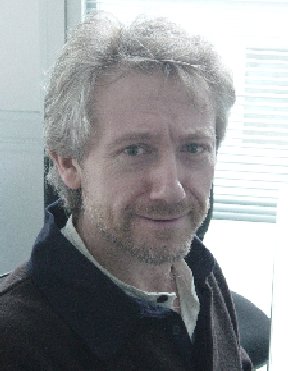
Baldo did his degree in Chemistry in 1987 and the doctorate in 1992 in the speciality of Biotechnology in the Autonomous University of Barcelona (UAB) under the supervison of Prof. E. Querol and Prof. F.X. Aviles. The main core of his doctorate was done under the supervision of Prof. O. Tapia in the Department of Physical Chemistry , in Uppsala (Sweden). Lately he's been working in the Molecular Modeling Lab of the Imperial Cancer Research Fund, supervised by Dr. MJE Sternberg. Between 1992 and 2001 he worked in the Institute of Fundamental Biology.Currently he is an associate professor of Structural Biology in the Pompeu Fabra University.
One of the main skills of our group is on comparative modeling of proteins. Besides structural characterization of a 3D modeled protein, we are involved in the development of tools to help modelers, like classification of protein loops on several protein datasets and description of protein motifs involved in functional signatures or foldability. Also, gene structure is important on the description of protein domains and motifs.
We are developping tools to relate structural and functional motifs with genomic information on splicing sites and alternative splicing. The description of function by means of sequence/structure relationships is a challenge on the post-genomic era in which Structural Genomics initiatives identify the protein conformation before knowledge of function is achieved.
The data mining on structural and sequence databases lead bioinformaticians and computational biologists to the development of prediction strategies. The intention of this group is to deep in the characterization of the conformational properties to achieve such predictions. We use many strategies to obtain this characterization and use them for the better understanding of biological problems of interest.
In most cellular processes, formation of protein complexes allows organisation of the proteome in functional units essential for cellular function. Therefore, another purpose of our group is to develop bioinformatic tools to predict protein-protein interactions and to analyze protein data to a genomic scale. This will allow the identification of elements involved in complex functional protein networks within cells. The development of prediction programs will be based on experimental data sets collected from intracellular signal transduction mechanisms. In eukariotic cells, extracellular stimuli are transmitted into the cell through complex protein interacting networks known as MAP kinase cascades, for which the mechanisms of regulation and structural complexity are beginning to be understood. Nevertheless, there is still a lot to know on the intrinsic relationships between those elements needed for the correct cell functionality. We are involved in the development of software to characterise and predict protein interaction networks, specially those involved in MAP kinase signal transduction mechanisms.
The methodologies employed and developed in the group are the following:
Comparative modeling;These are used in the following areas:
Structure description and topological classifications;
Machine learning approaches;
Methods of alignment of sequence and structure;
Molecular dynamic simulations;
Fold prediction;
Protein docking;
Function prediction and annotation;
Description of the dynamical properties of biomolecules;
 Personal Website
Personal Website
Live as if you were to die tomorrow, learn as if you were to live forever. Mahatma Gandhi.